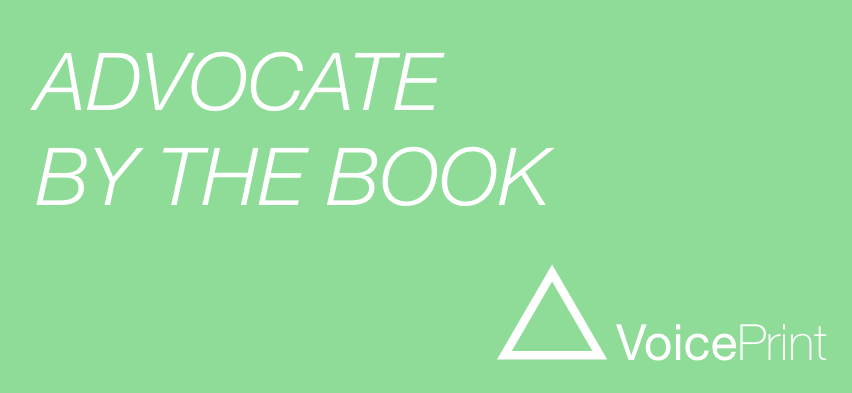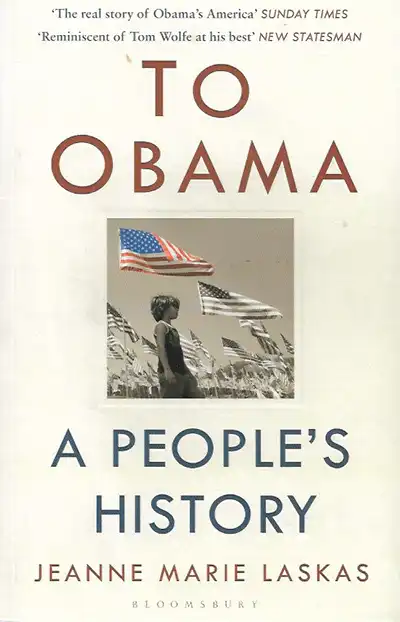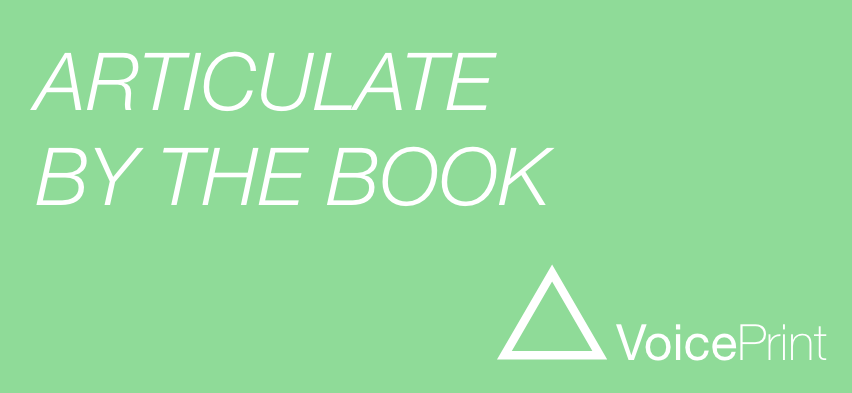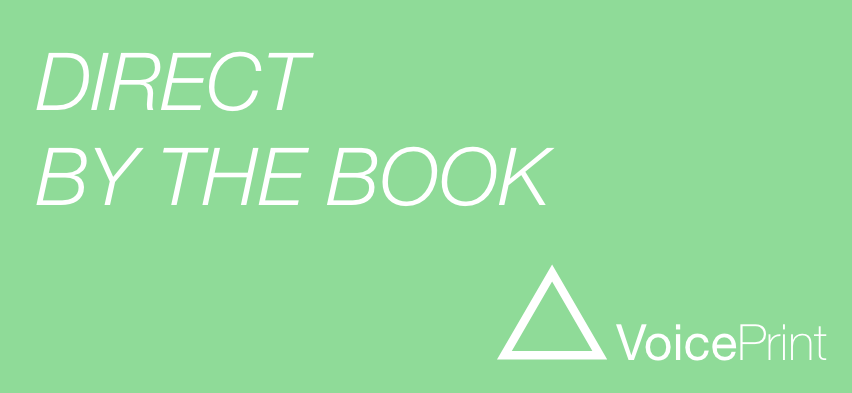
The book I was originally intending to recommend for its insights into the nature of the Advocate voice was When They Go Low, We Go High (1) by British columnist and former speechwriter Philip Collins. It’s a book which itself models the voice, arguing persuasively for good advocacy, providing detailed examples of effective practice and getting to grips with the distinction between effective advocacy for good purposes and effective advocacy for bad. It’s a substantial piece of work and there is much of potential value for VoicePrint practitioners to be found in it.
But I’m choosing to focus instead on an even more recent book, by the American writer Jeanne Marie Laskas, that comes at advocacy from a different direction. While Collins draws his cases and examples from public speakers, famous and infamous, Laskas takes hers from letters addressed in the opposite direction, by private citizens to the President of the United States.
To Obama: A People’s History (2) tells the story of the Office of Presidential Correspondence during the two-term administration of Barack Obama. But this is simply the thread that ties the pieces together. The bulk of the book consists of the letters themselves, or more precisely a representative sample of them and their extraordinary diversity. At its peak during Obama’s Presidency the OPC was receiving ten thousand letters a day. They came from all States of the Union, from the middle-aged, the young and the old, and not just from critics and opponents on the one hand and admirers and supporters on the other, but from individuals who simply felt the need to express themselves, to endeavour to make their voices heard, even if they could not be sure that what they wrote would ever be read.

Apart from its intrinsic interest as a historical insight into how the American people were feeling during the period 2008-2017, what might this book have to tell us about the nature and use of the Advocate voice?
Personally, I’m taking three fresh or enriched appreciations from it.
- First, about why people do it; what purpose the Advocate voice serves.
- Secondly, about what makes advocacy resonant and powerful.
- Thirdly, about the art of responding to the Advocate voice.
What purpose does the Advocate voice serve?
The letters in To Obama are full of the Advocate voice. They consist first and foremost of advocacy, of people stating their positions.
In the business context we are accustomed, or expect, Advocacy to be primarily about putting forward a proposition, presenting a case, or arguing for or against a particular course of action. And plenty of the letters to Obama do that.
‘I, as one of the WE in “WE THE PEOPLE” say to you STOP this terrible debt you are telling us to take on.’ [p 10]
‘I don’t know if it’s because we’re a minority as a community or maybe because of our location, but I really feel that school supplies such as computers, classrooms, even pencil and paper should be equally distributed to all schools no matter the district or location.’ [p 155]
But here case-making is secondary to the expression of concerns. Concerns about the fallout that followed the financial crisis of 2008, concerns precipitated by suddenly becoming unemployed and having, perhaps for the first time, little prospect of re-entering full-time work, concerns about political decisions or concerns arising from the experience of being a member of one minority group or another.
Advocacy needs to be recognised as a voice of concern. It may not be the only one, but it is the one through which feelings can be most explicitly conveyed. And the range of feelings in these letters is vast. Anger, disagreement and opposition. But also disappointment and frustration, anxiety and bewilderment. And surprise, gratitude and appreciation too. One of the functions of Advocacy, therefore, is simply to be a means of venting feelings, whether negative, ambivalent or positive.
‘I guess people like my wife and I don’t matter to you or the rest of the Washington crowd.’ [p.38]
‘I felt very good about the speech you gave last night after the second Boston bomber was captured. I still HATE Obama care, the entire thing. But the gun stuff could work.’ [p 150]
‘I’m not sure if I can adequately convey the mixture of fear, pride, heartache and hope I feel all jumbled together, on a daily basis.’ [p 130]
’I felt something so strong, that I had to write you right away and say THANK YOU. Thank you for standing up for women. THANK YOU FOR STANDING UP FOR WOMEN!’ [p.152]
The capitals show some of the strength of the emotions behind the words.
What makes the Advocate voice powerful?
The variety and intensity of the emotions expressed are part of what makes the advocacy in these letters so resonant. But this raises the question of what gives each of the nine voices its particular power. With the Direct voice power comes from authority, and with the Evaluate voice it comes from the power of logic, while the Advise voice derives its from expertise and the Articulate voice gets its power from clear, intelligible explanation.
The Advocate voice draws its power primarily from being individual. This is very evident in the letters to Obama. They do not draw their force from abstract, analytical or intellectual arguments, but from being highly personalised, human and distinctive. The most powerful appeals for charity work in the same way, although few of the letters in To Obama are appealing for charity.
Some of their power comes from the writer’s particular choice of words, images and phrasing, especially when these are unusual or unexpected. But most of it comes from the individuality of the voice, the sense that you are standing in the writer’s shoes and feeling their experience at first hand.
‘In 2007 I was proud of my hands. They had veneered calluses where my palms touched my fingers…I was nimble when whittling or sharpening an axe…My hands defined my work, my passions, my life…After 23 years as a land surveyor and nearly 2 years unemployed, I miss my career and my old hands. I kneel nights and clutch my new hands together, praying we all can recover what seems lost.’ [p 23]
‘I am 34. I will likely never own a home. I will likely never have a retirement pension. My generation was always told that if we worked hard and did well in school and stayed out of trouble we’d have secure futures. We were lied to, or at least misled…
We get by, day to day. Barely. We will never achieve the American Dream, if it ever existed. We will be silent victims, never suffering enough to be pitied but never succeeding enough to pay off our debts, to be able to live as we were promised.
The system is broken. The middle class is dead. We are its silent victims.’ [p 164]
Here is one of the key features of the Advocate voice. It provides everyone with at least a modicum of personal power. It’s not a controlling voice; it cannot insist or impose. Ultimately, its power is simply that of speaking out, of saying I am here and this is how it feels, seems or is for me. But without this voice the individual surrenders any identity in the world.
‘I’m pretty sure this is a silly thing to do – to write a letter to the President. But on some level – I know that staying silent about what you see and what needs changing never makes any difference. So I’m writing you to let you know what it’s like for us out here in the middle of the country. And I hope you will listen.’ [p 177]
How to respond to the Advocate voice
President Obama and his team were certainly listening. He instituted a regime in which 10 letters a day were included in the briefing papers that he took back to the White House residence every evening. They were not chosen to be easy reading, but to keep him in touch with what American citizens were actually experiencing. It was an important antidote for him to the bubble that is Washington and its political power games.
Most importantly, he was not a passive listener. As the book shows, he replied in person to many of the letters. And the manner of his replying reveals something not just about him and his leadership, but more broadly about how we should treat anyone who feels moved to use the Advocate voice.
The fact that they received a reply at all came as a surprise to many of the writers. Simply acknowledging someone’s advocacy, rather than disregarding it, is an important part of how to respond to this voice. We know that his replies could have significant and positive impacts, because several chapters describe what Laskas found when she followed up particular cases.
But the qualities of the response are what really matter. For a start, many of Obama’s replies were handwritten by him personally. That immediately humanises and elevates not only the response but also both parties to the conversation: it demonstrates that real people are talking with each other. And the recipient is named. His or her unique identity is affirmed. Marnie, Tim, Rebecca, Kenny, Heba, Noah…
And Obama almost invariably begins by saying Thank you. A simple courtesy. ‘Your letter reached my desk and I wanted to thank you for writing.’ ‘Thank you for your note.’ ‘Thanks for taking the trouble to write.’ More than that, he provides some indication of the impact that the letter has had on him. ‘Thoughtful.’ ‘Beautiful.’ ‘Powerful.’ ‘Moving.’ ‘Inspiring.’ If we want someone to know that their voice has been heard, we have to give them something back, and that something doesn’t need to be long-winded, it simply needs to be authentic. ‘I am glad you trusted me with your letter and I want you to know it was read.’ [216] ‘I appreciate the courage it took to send your note.’ [216] ‘I can only imagine the heartbreak you’ve gone through. [95]
Part of what makes his responses authentic is that he does not use evasions or confine himself to what could be perceived as simple platitudes. His handwriting is joined-up and thoughtful and so are his responses.
‘I applaud your life of responsibility, but frankly am puzzled as to why you think I don’t share those values.’ [6]. ‘I confess I was confused by the anger directed at the Administration, since we are working every day to get a strong health care bill passed.’ [39] ‘Your cynicism about my motives may be a bit misplaced; I know and similarly care for a lot of young people like your son’s friend.’ [174]
Even when disagreeing with a correspondent, or inviting the individual to qualify their point of view, Obama explicitly acknowledges their right to have it and to speak up about it. Indeed the implicit message in his replies is that we all have not just a right but a responsibility to be thinking carefully about things and forming views about them. The whole book is a testament to the value and power of dialogue, and to honouring the place of the Advocate voice in that process.
What Obama does not do is to resort to counter-advocacy. We could all take a lesson from that, because when Advocacy is met by Advocacy, then the process of dialogue tends to become stuck in a confrontation of inflexible positions generating much heat and little movement. Nor does he make vague or hollow commitments to take action. What he does do is to explain what actions are already being taken, and to provide some broader framework or perspective in which those actions can be understood.
’I know things are tough out there right now, and I won’t try to pretend that I’ve got a guaranteed solution to your immediate situation. But the economy is slowly getting better and we are working every day to push through Congress measures that might help, like student loan forgiveness or mitigation.’ [165]
‘The day I walked into office I inherited the worst economic crisis since The Great Depression. And after a very tough year, we have begun to turn the corner, with the economy growing again. That may be little consolation to you and others that are out of work, and I won’t be satisfied until jobs are being created in Riverside and across the country.’ [101]
The response is a combination of the Articulate voice, careful, objective clarifying and explanation, coupled with Obama’s own voice, advocating where he stands personally. The effect of the Articulate element is to put both the original letter and the President’s reply in a larger, shared context, a basis – potentially – for a new, shared understanding.
It’s said that To Obama is Barack Obama’s own favourite account of his years as President. It’s easy to see why, and easy to admire his statesmanlike and respectful way of handling others’ advocacy.
Alan Robertson
May 2019
References
(1) When They Go Low, We Go High by Philip Collins is published by 4th Estate, London (2017)
ISBN 978-0-00-823569-7
(2) To Obama: A People’s History by Jeanne Marie lasts is published by Bloomsbury (2018)
ISBN 978-1-4088-9450-7
The letters cited can be found on the pages referenced in square brackets.
Ready for a conversation?


